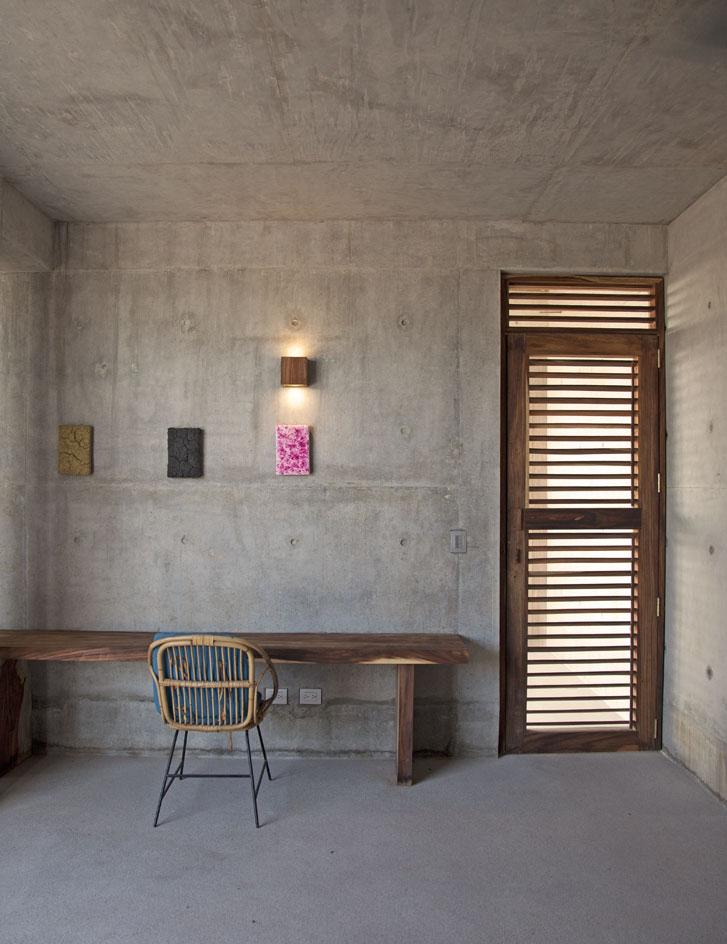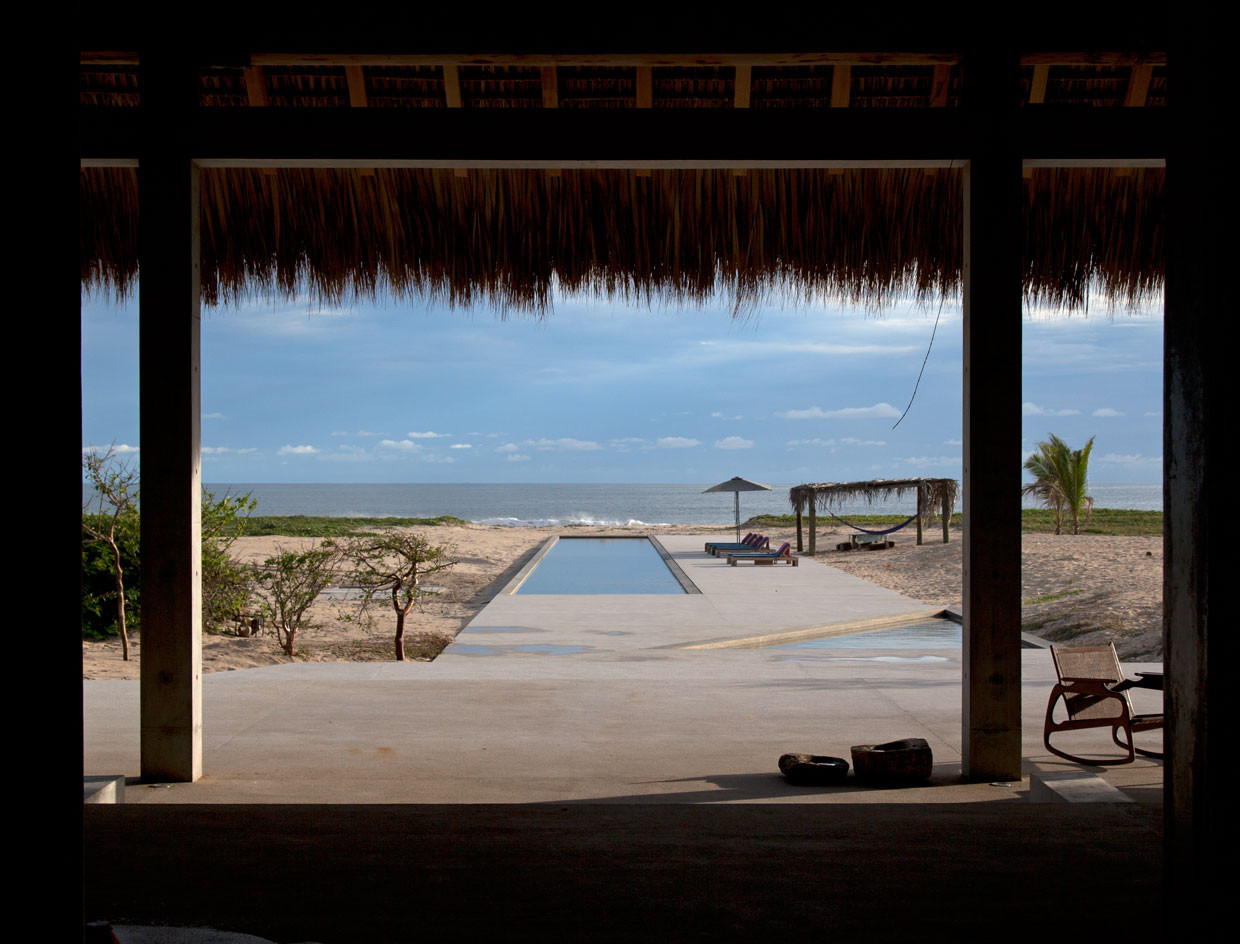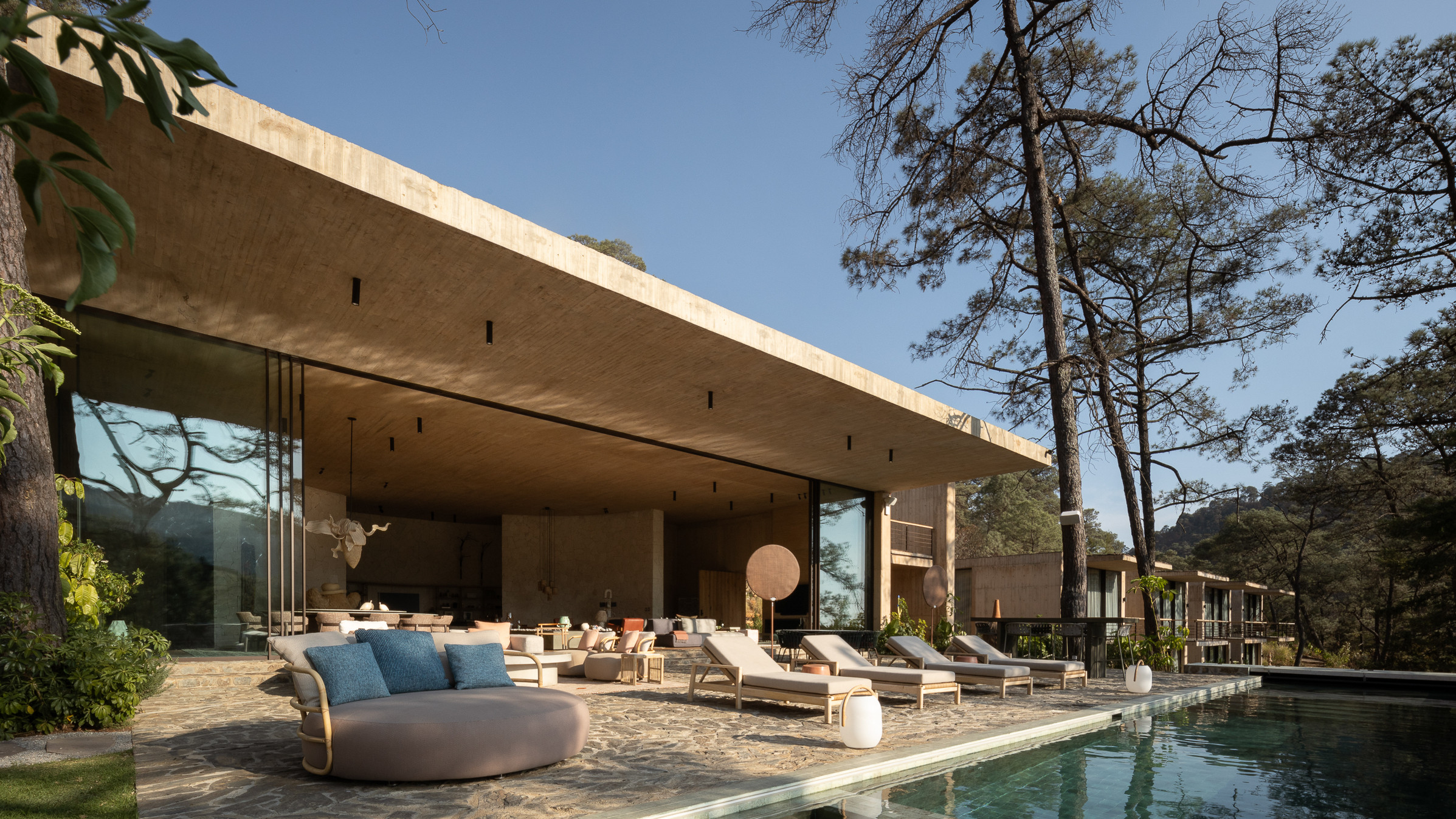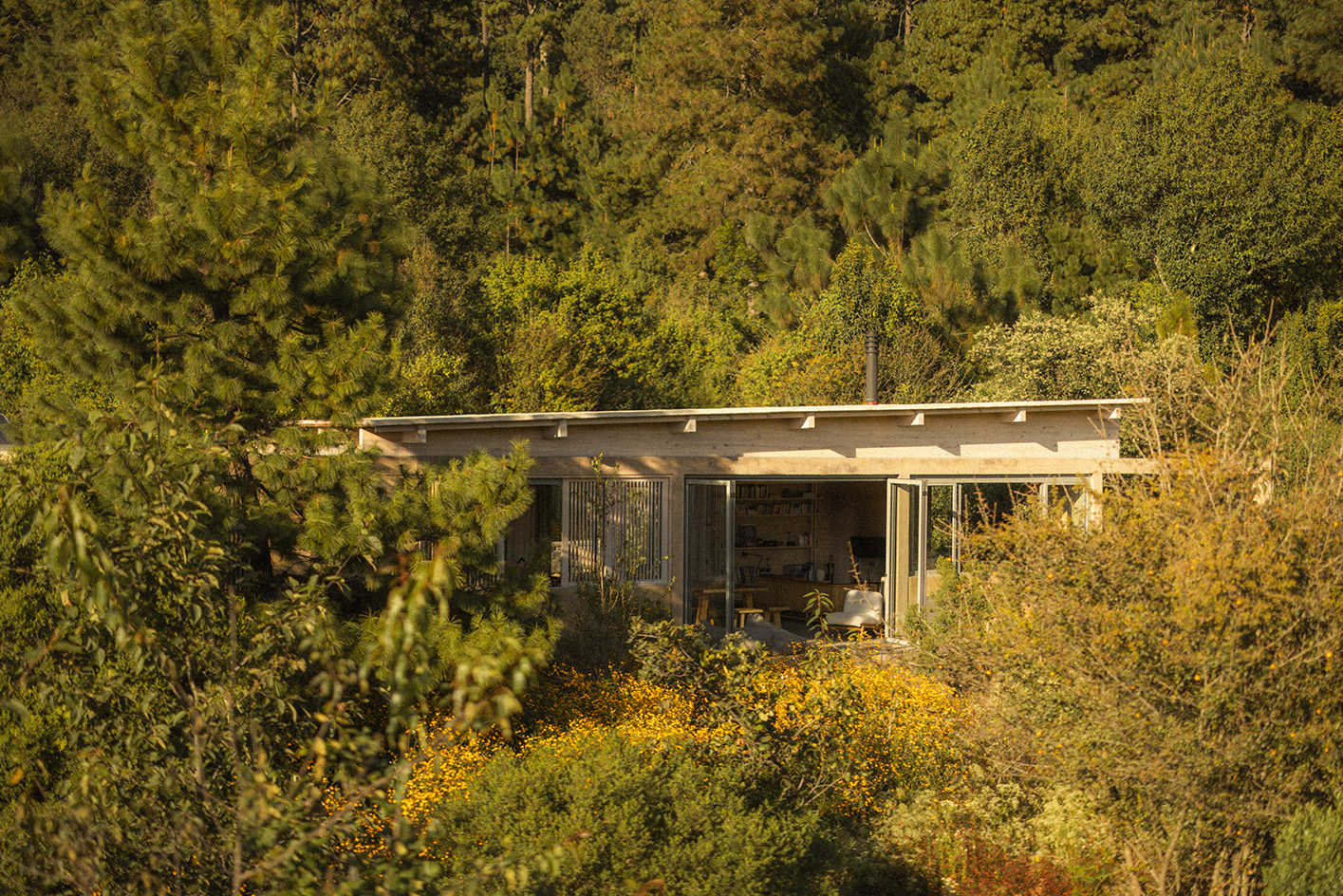The new Casa Wabi Foundation by Tadao Ando in Mexico combines tradition and modern design

Following last year's grand opening of the art, architecture and design school at the University of Monterrey (The Gate of Creation), Mexico has been gearing up for the launch of its second high profile public building designed by Tadao Ando; the home for the Casa Wabi Foundation.
Set up by artist Bosco Sodi and directed by Patricia Martin (former director and curator of La Colección Jumex), the art foundation is situated on the outskirts of Puerto Escondido, Oaxaca, about 500 miles southwest of Mexico City. Sodi 'always admired Ando's architecture' and approached the Japanese Pritzker Prize-winning architect for the design of his foundation's new headquarters. There is one more Japanese connection - Casa Wabi is named after the Japanese ideal of wabi-sabi, which revolves around the beauty of life's imperfections.
Ando obliged, creating a central complex around which sit six freestanding residences. The composition also includes two studios, an exhibition space and several multipurpose spaces. A 67-acre botanical garden set to become the foundation's outdoor contemporary art collection completes the scheme.
The architecture combines modern and traditional materials and techniques; the structure is concrete, following Ando's signature style, but also uses the region's traditional 'palapa' construction. This is an open-sided pavilion featuring a thatched roof made of dried palm leaves that is common in that area of Mexico.
Casa Wabi opens this weekend with a new site-specific installation by French artist Daniel Buren and aims to run four main programs: an interdisciplinary artist residency, social and education programs and a garden and film program that will bring together the artists and the local community. The foundation is open by appointment.

The architecture combines modern and traditional materials and techniques.

The structures are concrete, following Ando's signature style, but the architect also uses the region's traditional 'palapa' pavilions.

A palapa is an open-sided pavilion, featuring a thatched roof made of dried palm leaves that is common in that area of Mexico

The complex includes two studios, an exhibition space and several multipurpose spaces.

Casa Wabi takes its name after the Japanese concept of wabi-sabi, which revolves around the beauty of life's imperfections.

The foundation's team aims for the program to bring together the artists and the local community.
ADDRESS
G Protasio Tagle 41, Piso 1
San Miguel Chapultepec
Miguel Hidalgo, 11850
Mexico
Receive our daily digest of inspiration, escapism and design stories from around the world direct to your inbox.
Ellie Stathaki is the Architecture & Environment Director at Wallpaper*. She trained as an architect at the Aristotle University of Thessaloniki in Greece and studied architectural history at the Bartlett in London. Now an established journalist, she has been a member of the Wallpaper* team since 2006, visiting buildings across the globe and interviewing leading architects such as Tadao Ando and Rem Koolhaas. Ellie has also taken part in judging panels, moderated events, curated shows and contributed in books, such as The Contemporary House (Thames & Hudson, 2018), Glenn Sestig Architecture Diary (2020) and House London (2022).
-
 Homespun pleasures are the order of the day at this warm Kraków restaurant
Homespun pleasures are the order of the day at this warm Kraków restaurantLocated in the Kazimierz district, Dala Restaurang emerges as a space where homely character meets a love for nature and the simplicity of life
-
 Gergei Erdei’s furniture collection with Porta Romana is inspired by treasured family heirlooms
Gergei Erdei’s furniture collection with Porta Romana is inspired by treasured family heirloomsWorking closely with the British furniture and lighting company, artist and designer Gergei Erdei drew inspiration from his grandmother’s jewellery box to create a furniture collection which has an air of antiqueness
-
 Frank Lloyd Wright’s Fountainhead will be opened to the public for the first time
Frank Lloyd Wright’s Fountainhead will be opened to the public for the first timeThe home, a defining example of the architect’s vision for American design, has been acquired by the Mississippi Museum of Art, which will open it to the public, giving visitors the chance to experience Frank Lloyd Wright’s genius firsthand
-
 Serenity radiates through this Mexican home, set between two ravines
Serenity radiates through this Mexican home, set between two ravinesOn the cusp of a lakeside town, Mexican home Casa el Espino is a single-storey residence by Soler Orozco Arquitectos (SOA)
-
 Mexican landscape architect Mario Schjetnan's Grupo de Diseño wins 2025 Oberlander Prize
Mexican landscape architect Mario Schjetnan's Grupo de Diseño wins 2025 Oberlander PrizeThe 2025 Oberlander Prize goes to Mexican landscape architect Mario Schjetnan and his studio, Grupo de Diseño, highlighting the creative's motto: 'We have a human right to open space'
-
 The Architecture Edit: Wallpaper’s houses of the month
The Architecture Edit: Wallpaper’s houses of the monthThis September, Wallpaper highlighted a striking mix of architecture – from iconic modernist homes newly up for sale to the dramatic transformation of a crumbling Scottish cottage. These are the projects that caught our eye
-
 A Mexican clifftop retreat offers both drama, and a sense of place
A Mexican clifftop retreat offers both drama, and a sense of placeCasa Piscina del cielo, a clifftop retreat by Zozaya Arquitectos, creates the perfect blend of drama and cosiness on Mexico's Pacific Coast
-
 Broken up into six pavilions, this brutalist Mexican house is embedded in the landscape
Broken up into six pavilions, this brutalist Mexican house is embedded in the landscapeSordo Madaleno’s brutalist Mexican house, Rancho del Bosque, is divided up into a series of pavilions to preserve the character of its hillside site, combining concrete, curves and far-reaching views
-
 The Architecture Edit: Wallpaper’s houses of the month
The Architecture Edit: Wallpaper’s houses of the monthWallpaper* has spotlighted an array of remarkable architecture in the past month – from a pink desert home to structures that appears to float above the ground. These are the houses and buildings that most captured our attention in August 2025
-
 Estudio Ome on how the goal of its landscapes ‘is to provoke, even through a subtle detail, an experience’
Estudio Ome on how the goal of its landscapes ‘is to provoke, even through a subtle detail, an experience’The Mexico City-based practice explores landscape architecture in Mexico, France and beyond, seeking to unite ‘art and ecology’
-
 Pretty in cactus-inspired pink, this Mexican desert house responds to its arid context
Pretty in cactus-inspired pink, this Mexican desert house responds to its arid contextCasa Cardona, a pink house by architects Sensacional Dinamica Mexicana, is a multigenerational home that celebrates colour and changing light